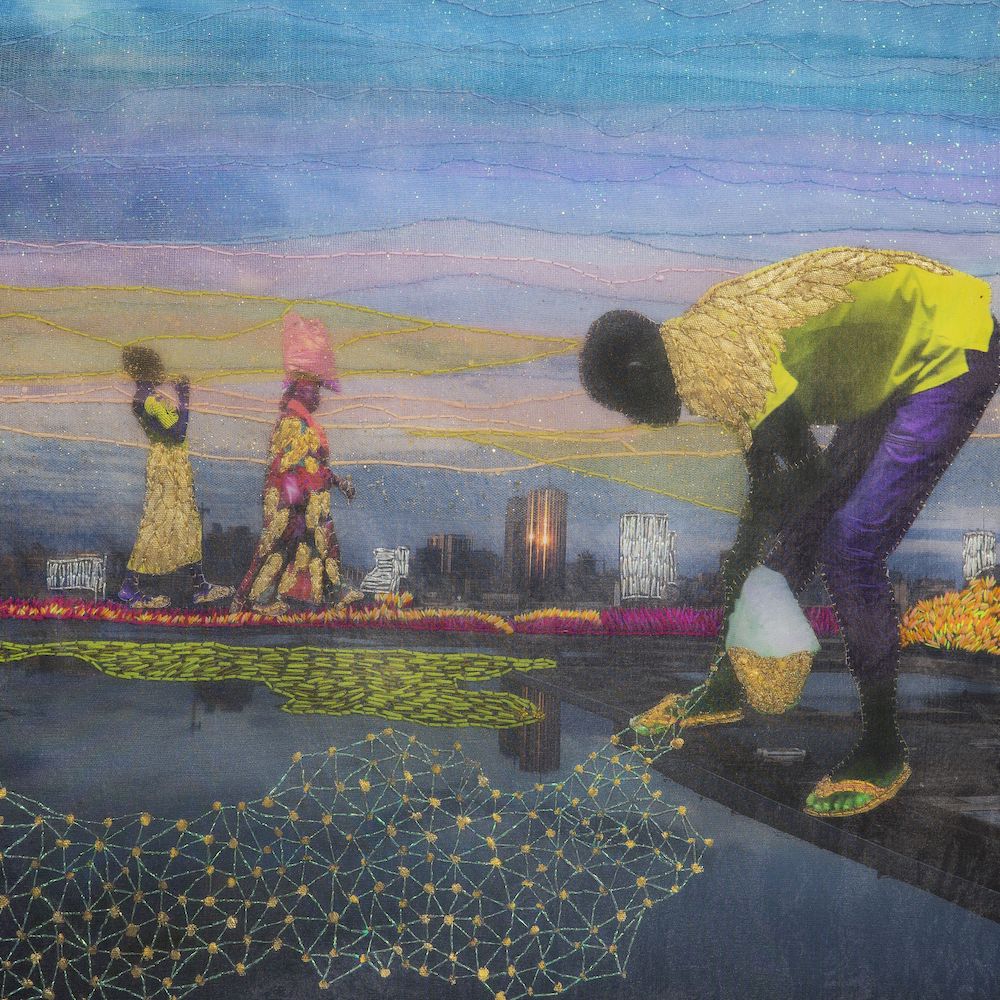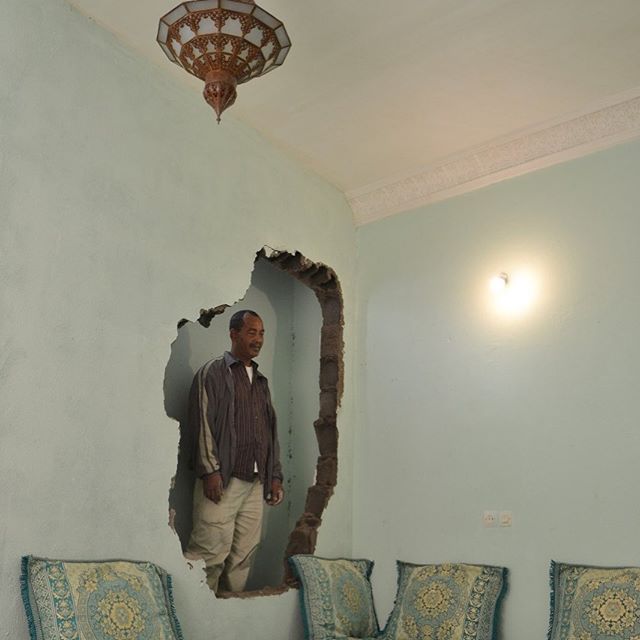DUBAI: Located in the trendy Le Triangle district of Casablanca, a step inside Loft Art Gallery is akin to visiting a white cube art space in the Chelsea neighborhood of Manhattan, New York. That is exactly the experience sisters Myriem and Yasmine Berrada wanted to create when they opened the gallery in 2009. The largest and first white cube space dedicated to modern and contemporary art from Morocco and the African continent in Casablanca, Loft Art Gallery has, since its inception, played a pivotal role in the careers of some of the country’s most important artists, including Mohammed Melehi and Mohammed Hamidi. It has also shined a light on some of Morocco’s leading younger artists, including Amina Agueznay, Hicham Benohoud and Mohammed Lekleti.
In recent years, Loft Art Gallery has expanded its focus to Sub-Saharan African artists, such as Joana Choumali, winner of the Prix Pictet photography award and whose work is presently on view in the virtual exhibition “Hope.”
From its base in Morocco, a long-time strategic bridge between Europe, the Middle East and Sub-Saharan Africa, Loft Art Gallery aims to display the talent of its artists to new collectors and institutions across the world.

Joanna Choumali, ‘Ablutions,’ 2020. Embroidery and collage manual on digital photo printing on cotton canvas. (Supplied)
“I am first and foremost a Moroccan art gallery owner, but my gallery is open to the world,” Berrada told Arab News. “I want it to serve as the artistic bridge between Morocco and the rest of world while always maintaining a focus on Africa. My goal is to enhance cross-cultural dialogue through art for my artists, collectors, and curators.”
Morocco has long served as a historical crossroads for many cultures. The country has been home to Jews, Muslims, Berbers, Africans, Europeans and people across the Mediterranean.
“Moroccan artists are inspired by their homeland, but their artistic language is universal,” said Berrada. “The multiculturalism of Morocco endows the country with its cultural richness.”
It is exactly the country’s multicultural depth that Berrada seeks to convey both within the MENA region and internationally.

Portrait of Yasmine Berrada. Photographed by Lamia Lahbabi
“I want the gallery to be seen as a whole,” she told Arab News. “I want my gallery to serve as a platform for the stories that these artists tell through their work.”
Until the coronavirus disease (COVID-19) hit, the gallery participated in international art fairs, including Art Dubai, Art Paris, 1-54 Contemporary African Art Fair Marrakech and AKAA (Also Known As Africa), a fair dedicated to African art and design in Paris.
Loft Art Gallery regularly collaborates with international art institutions, including the Centre Pompidou in Paris, the Tate Modern in London, the Giverny Museum in France and the Haus der Kunst in Munich, among others. It also has a publishing arm known as Loft Edition, which publishes books and catalogues on modern and contemporary Moroccan art history.

By Mohamed Melehi. Supplied
“This is the first time that the entire world is suffering from the same malaise. The art world has really been hit. Until recently, all museums were closed. Fairs have been cancelled, and sales are down. We all need to work together during this time,” Berrada said.
“What has been crucial for me is maintaining strong partnerships with collectors and with my artists. It’s vital for humanity that we stay in close contact. Art has a big role to play. It connects people and, most importantly, different cultures. It offers hope and beauty at a time when we need it most.”
Loft Art Gallery is one of the first Moroccan galleries to digitalize. The gallery now has an e-commerce platform on its website where it sells art, a weekly newsletter and online viewing rooms. It has also partnered with Artsy, another channel through which it promotes its Moroccan and African artists to the world.

‘The Hole,’ Hicham Benohoud, 2015. Instagram/@loftartgallery
“This period hasn’t been easy,” said Berrada. “I made sure I was always in contact with our artists and that we continued to work on future programs. It was crucial that we continue to nourish our artists with hope through the planning of new projects and exhibitions.
“It was vital that our creativity did not stop, neither for us as a gallery nor for our artists. Creativity must continue. That is the only way forward.”
In October ,the gallery plans to host its first physical exhibition on textile works by contemporary Moroccan artists such as Amina Agueznay, alongside more traditional takes on the craft.












